Quince
Seeds
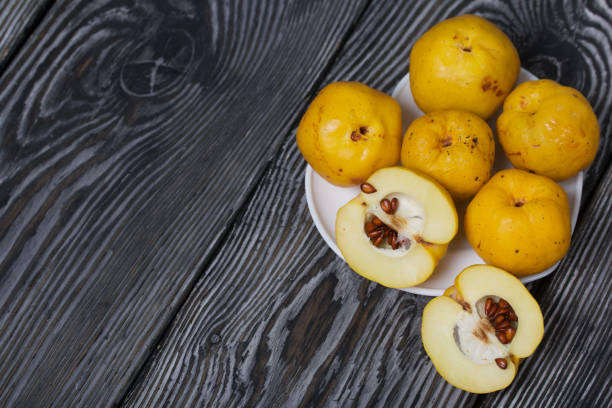
Quince (Cydonia oblonga) is a deciduous tree that produces pear-shaped, aromatic fruits. The seeds of the quince fruit are small, brown, and glossy, encased within the fruit’s core. Though often overlooked, these seeds have been used for centuries in traditional medicine and culinary practices. Quince seeds are known for their mucilaginous properties, which means they can produce a thick, gel-like substance when soaked in water. This characteristic makes them valuable in both medicinal and cosmetic applications.
1. Size:
- Quince seeds are small, typically about 5 mm in length, and oval in shape. They are slightly flattened with a smooth, hard outer surface.
2. Color:
- The seeds are dark brown to reddish-brown, with a shiny, polished appearance.
3. Texture:
- Quince seeds are hard and smooth when dry. When soaked in water, they become coated with a gelatinous layer, which gives them a slippery, mucilaginous texture.
4. Fragrance:
- Quince seeds have a faint, slightly nutty aroma when crushed, but they are not particularly fragrant on their own.
5. Uses:
Quince seeds are sometimes used in cooking to add a gelatinous texture to desserts, jams, and jellies. The mucilage produced by the seeds when soaked can be used as a natural thickening agent in various recipes.
In traditional medicine, quince seeds are often used for their soothing properties. The mucilage from soaked seeds is commonly used to treat sore throats, coughs, and gastrointestinal issues. It is believed to coat and soothe mucous membranes, providing relief from irritation and inflammation.
The gel-like substance produced by quince seeds is sometimes used in cosmetic formulations, particularly in natural skincare products. It is valued for its moisturizing and soothing properties, making it a popular ingredient in lotions, creams, and hair conditioners.
6. Habitat:
- Quince trees are native to the temperate regions of Western Asia and Eastern Europe. They thrive in well-drained soil and full sun, often found in orchards or cultivated gardens. The trees are hardy and can withstand a variety of climatic conditions, making them a popular fruit tree in many regions.
7. Cultural and Spiritual Significance:
Quince has a long history of use in various cultures, particularly in the Middle East and Mediterranean regions. The seeds, though less commonly used than the fruit, have been employed in traditional remedies and culinary practices for centuries. In some cultures, quince seeds were used to make a soothing drink or gel, believed to have various health benefits.
While quince seeds are not commonly associated with specific spiritual practices, the quince fruit itself has been considered a symbol of love, fertility, and prosperity in various cultures. The seeds, as part of the fruit, may carry some of these symbolic meanings, particularly in rituals or traditions involving fertility and abundance.
Spiritual Properties
Protection and Purification: Quince seeds, like the fruit, are sometimes used in spiritual practices for protection and purification. The seeds can be carried as a talisman or used in rituals to ward off negative energy and promote spiritual cleansing.
Symbol of Fertility: In some traditions, quince seeds are associated with fertility and new beginnings. They may be used in rituals or offerings to promote growth, abundance, and the birth of new ideas or projects.
Medicinal Properties
Soothing Agent: Quince seeds are renowned for their ability to soothe irritated mucous membranes. The mucilage they produce is often used to relieve sore throats, coughs, and other respiratory conditions by coating and calming the throat and airways.
Digestive Aid: The seeds are also used to ease digestive discomfort, particularly in cases of inflammation or irritation of the stomach lining. The gel produced by the seeds is believed to protect the stomach and intestines, aiding in the healing process.
Skin Health: The mucilage from quince seeds is valued for its moisturizing and healing properties in skincare. It can be applied topically to soothe dry or irritated skin, making it a popular ingredient in natural skincare remedies.
Allergic Reactions
Quince seeds are generally considered safe when used in small quantities, particularly in traditional culinary and medicinal applications. However, they contain small amounts of cyanogenic glycosides, which can release cyanide when metabolized, so they should be consumed in moderation and not ingested in large quantities.
Skin Irritation: While generally safe, some individuals may experience mild skin irritation when handling or using quince seeds, particularly in topical applications. Symptoms may include redness, itching, or a slight rash.
Respiratory Sensitivity: In rare cases, the inhalation of dust from dried quince seeds may cause respiratory discomfort, especially in individuals with pre-existing conditions like asthma. This can result in coughing, wheezing, or shortness of breath.
Cyanogenic Glycosides: Quince seeds contain small amounts of cyanogenic glycosides, which can release cyanide when metabolized. Consuming large quantities of the seeds may lead to cyanide poisoning, with symptoms including headache, dizziness, and nausea. It is important to consume quince seeds in moderation and avoid eating them in large quantities.
Digestive Discomfort: Overconsumption of quince seeds may lead to digestive discomfort, such as bloating or stomach cramps. This is due to the mucilaginous nature of the seeds, which can expand in the stomach and cause discomfort if consumed in excess.
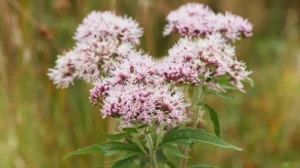
Valerian Root
Valerian Root Valerian Root, derived from the Valeriana officinalis plant, is a well-known herb used for its calming and sedative properties. It is commonly utilized

Holy Basil (Tulsi) Protection Tea
Holy Basil (Tulsi) Protection Tea A sacred tea known for its spiritual protection and ability to promote inner strength, clarity, and resilience. Ingredients: Holy Basil
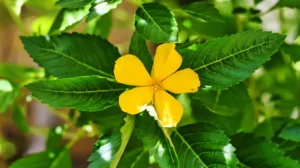
Damiana Leaf
Damiana Leaf Damiana Leaf is an aromatic herb known for its use in traditional medicine, particularly in Central and South America. It is valued for
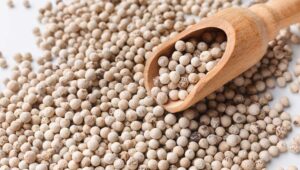
White Peppercorn
White Peppercorn White Peppercorns are derived from the same plant as black pepper, Piper nigrum, but are processed differently. They are fully ripened berries that
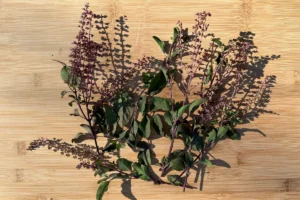
Rama Holy Basil
Rama Holy Basil Rama Holy Basil is a revered herb in Ayurveda and has a significant presence in traditional Indian medicine. Known for its aromatic

Moringa Leaf Powder
Hibiscus Flowers Moringa (Moringa oleifera), often referred to as the "Miracle Tree," is a highly nutritious plant native to the Indian subcontinent and parts of